We tell us whether it is possible to stick the wallpaper on the painted wall and how to do it right.
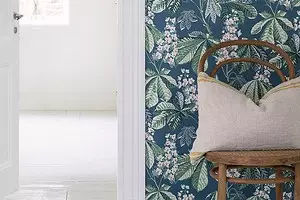
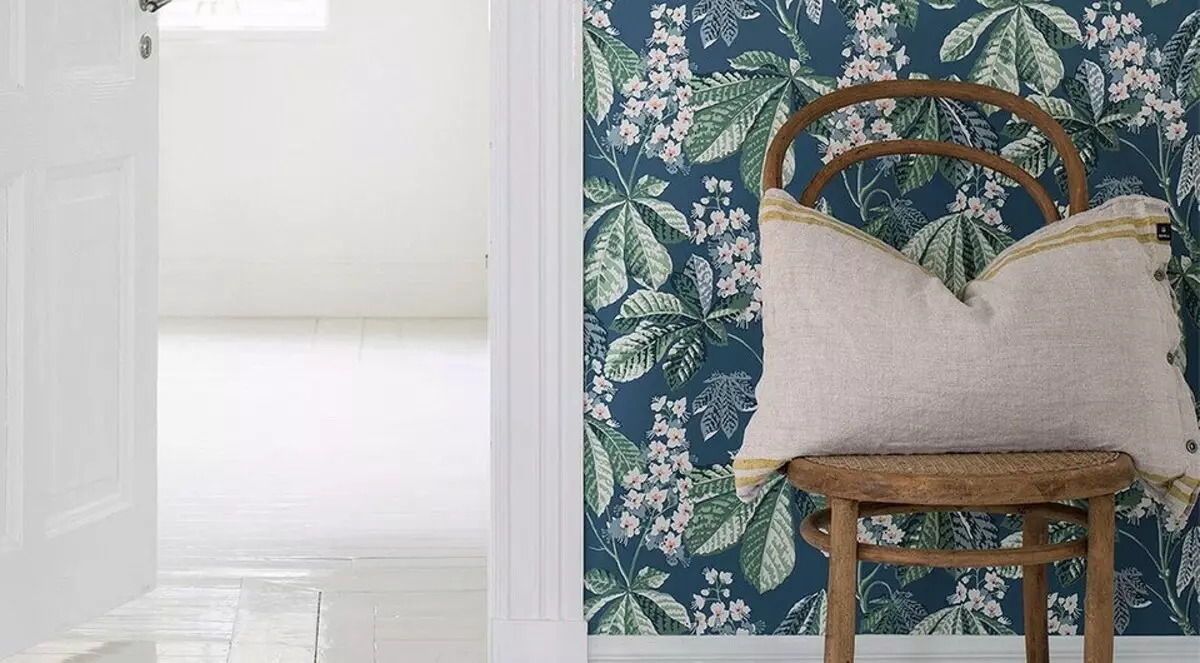
All about sticking wallpapers for painted base
When the wobbly canvases glue to paintDetailed instructions:
- For water emulsion
- for enamel and oil preparations
- For whitels
- For acrylic emulsions
Is it possible to glue wallpaper on oil and other paints
Repairs always takes a lot of time and strength, so I want to finish it in the shortest possible time. Especially laborious work on the preparation of the surface to the finishing finish. And it's a shame if it is already aligned, but painted by any composition. Specialists are positively answering the question, is it possible to glue the wallpaper on the water-emulsion and other paints. True, negotiate a number of nuances.
The main thing is the need for high-quality preparation of the painted basis. If this is not done, after some time the panels will begin to bubble and fall behind. For each type of coloring mixture, special preparation is required. There are several kinds of paints, list those most often used for wall design:
- Oil;
- VioMulsion
- acrylic;
- whitewash.
If the surface is finished one of them, after some preparation, you can safely draw it with wallpaper. Therefore, it is important to correctly determine the type of coating and evaluate its condition. The finish poorly retaining on the wall will have to be removed, otherwise the cloths glued on it will fall along with it.
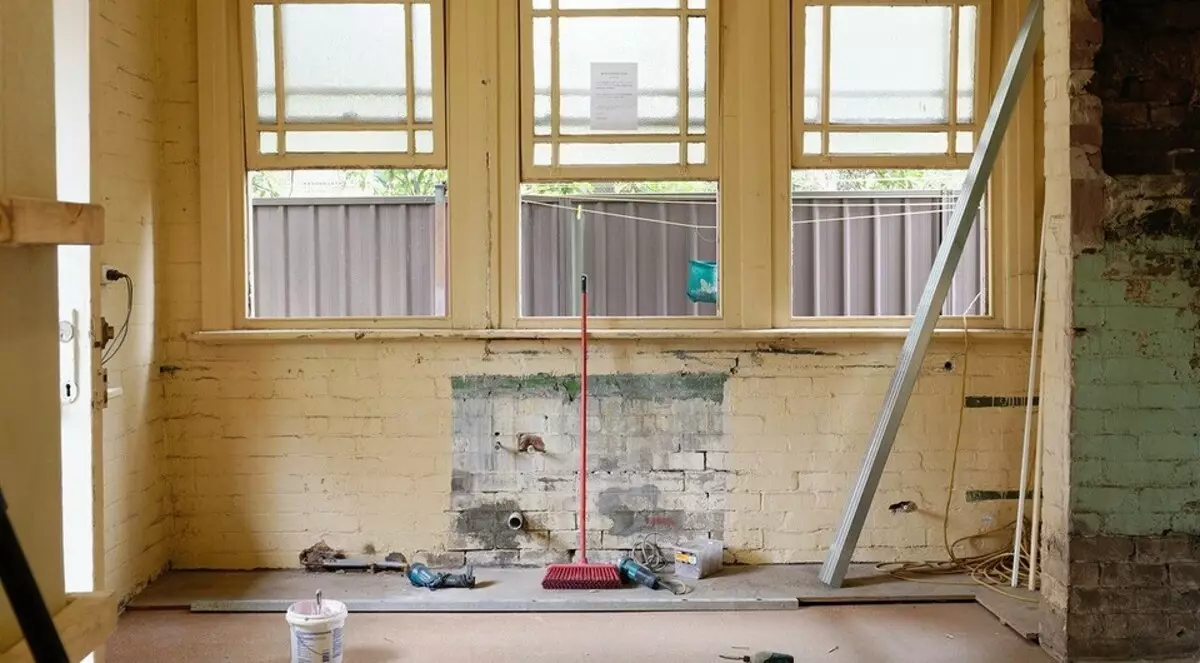
How to determine the type of coloring agent
- Purge emulsion preparation. After it was spent on a wet sponge, it will be bubble and partially washed off.
- Whitewash. It is enough to spend your hand on the dry surface, traces from lime or chalk remain.
- Enamel and oil compositions. Forming a waterproof shiny dense layer. When you try to remove it, removed quite easily with large plates.
- Acrylic. Externally, it looks like a waterway, but water is not washed away. Unlike enamel removed badly, separated by thin layers similar to the film.
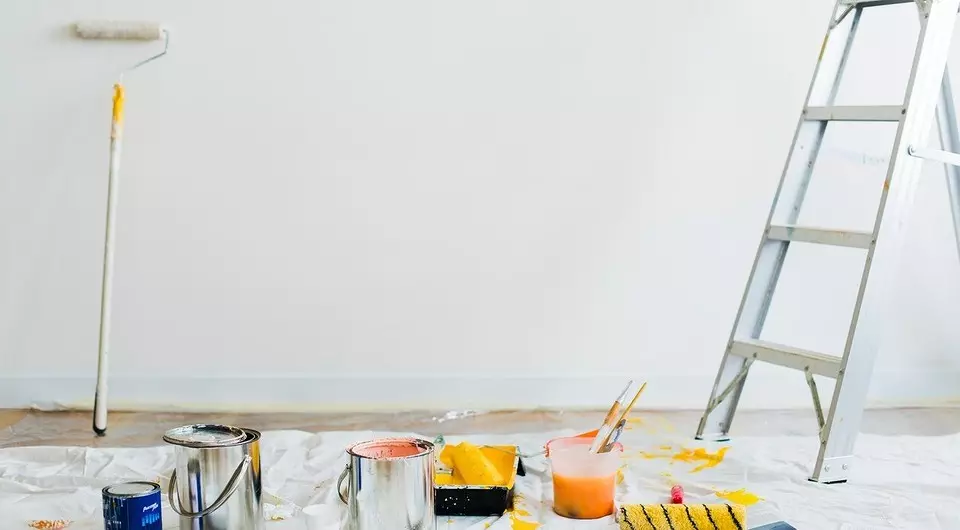
How to do everything right
Before starting repair work, you need to make sure that the old paint, which is going to punish decorative panels, is reliably held on the basis.How to check paint strength
- On a small fragment we apply a layer of the wallpaper glue and let him dry. We take a spatula and try to remove the resulting film. If it is separated along with the colorful layer, the latter will have to be removed.
- We take a piece of stationery tape and clutch it tightly to the old finish. Then remove it with a sharp jerk. If there is a piece of base to the reverse side of the tape, it means it will have to be cleaned.
But even if it is firmly held, it is necessary to carry out preparatory work before sticking wallpaper on paint.
Preparatory work before pasting the painted wall
- Carefully inspect painting, we reveal the problem areas. It is a swollen or lagging lacquer layer, the presence of fungus or mold, cracks, etc.
- Clean fragments with defects. Displaced areas carefully cleaned with a spatula. Cracks extend. The fungus and mold wash the rigidly brush with antiseptic preparations.
- Purified irregularities and cracks are processed by primer, we wait until they dried. Splice is flawed, we leave until the putty put the putty.
- The base prepared in this way is pure water. So we remove dust and pollution. Scoot or fat stains process with special preparations to remove completely.
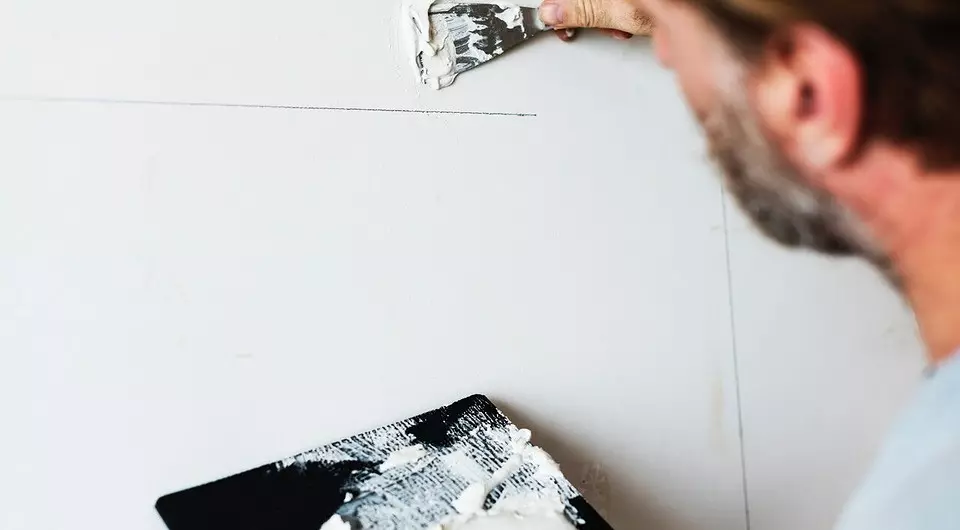
These works are common to walls painted with solutions of any type. After the washed surface is dry, it is prepared for sticking in different ways. It all depends on the type of coloring drug.
Water-emulsion mixes
The main problem of water-emulsion is hygroscopicity. Glue wets painting. It absorbs moisture out of it, under the influence of which its structure is broken. The composition is destroyed and peeled. As a result, voids are formed under the glitched panels. Over time, there will be more of them, the finish will stop hold on and falls. Nevertheless, glue wallpaper on the water-level paint can be. You just need to properly prepare the surface.How to prepare the surface
- We are preparing a mixture for the first application. To do this, mix in equal proportions primer and solvent. The latter will partially solvent an old water-emulsion, which will help the rice to penetrate the structure of the old painting as deeply as possible.
- We apply a mixture. Let the foundation completely dry.
- We apply a layer of pure primer. It is best to choose the composition of deep penetration so that the clutch of the materials was as strong as possible.
- After the solution is driving, you can start sticking the finish. For better clutch, the wizard is recommended to mix the adhesive with PVA in equal proportions.
If the water-emulsion is kept bad, you should not mess with it preparation for pasting. The result is likely to be unsatisfactory. This coating is washed away. Make it is quite simple. Mixed in warm water brushed with a small force sequentially washed each site. Rinsed with clean water, dried.
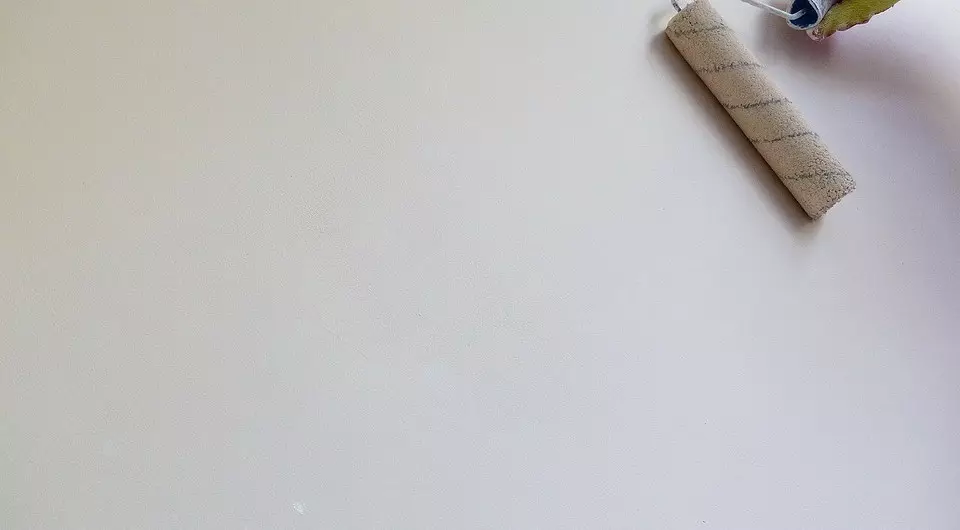
Oil compositions and enamel
Determine on the eye, which of these compositions was painted the base is almost impossible. Especially if the coating is old. But it does not matter because enamel and oil have a lot in common. They form a resistant waterproof film, matte or with glitter. In any case, it is smooth, which prevents glue to securely secure. The main problem is to remove this excessive smoothness.How to prepare the surface
- We take a major sandpaper and fasten it on the holder. The resulting tool must be convenient to use.
- Carefully speck the enamel film, leaving scratches on it. As a result, the basis should be rough.
- Smetae the resulting dust, wipe the coating with a damp cloth.
- The appropriate primer is divorced by PVA glue in proportion one to one. The resulting mixture with a primer base.
We are waiting for a complete drying, after which, if necessary, repeat the priming. The second layer is superimposed with clean primer. There is another method of preparation painted with oil or enamel base under wallpaper:
- We take the chisel and with its help we remove the paint strip 5-6 cm from the ceiling to the floor.
- We retreat from the first strip about 20 cm and remove the next strip. We carry out such notches until the end of the wall.
- We clean the resulting strips from dust, wipe them with a damp cloth.
- We assign suitable primer on the notches, waiting for it drying.
- For liberated from finishing, the primed areas are applied to a suitable putty and gently align the basis.
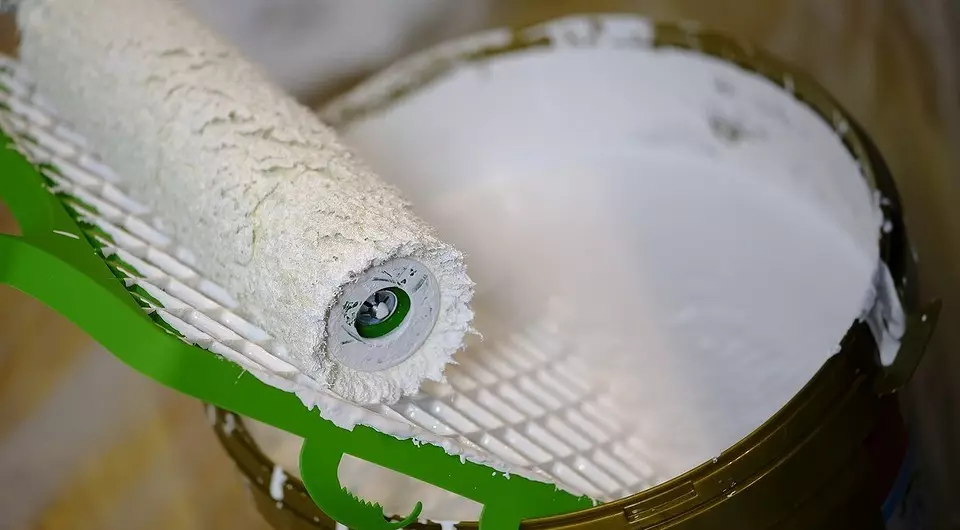
After drying the material, finishing works can be continued. The second method of preparing the bases painted with oil or enamel preparations is considered more laborious. It is chosen if you need to align the coating.
Chalk or lime
It does not matter, based on the lime or chalk, the composition of the resulting coating was very fragile. It will not endure weight even light cloth. Without proper preparation, the new finish will suck at all long.How to prepare the surface
- We prepare a warm soap solution. Abundantly wet them the wall. We do it with the help of a pulverizer or a foam sponge.
- Scratching bliss with a spatula. She takes off well.
- Rinse the base with warm water.
After it dries, you need to check the quality of the preparatory work. For this, we carry out the coating with your hand. If traces of bliss remain on it, you will have to repeat the procedure. Loose wallpapers can not be glued, even small areas with the preserved old decoration will spoil the quality of the new finish. If this method seemed too time consuming, you can do otherwise:
- Preparing primer deep penetration. Abundantly apply the first layer.
- Let us completely dry, sting again.
- We divor the wallpaper glue. Liquids should be no more than 20%. We assign a lot to the degraded base.
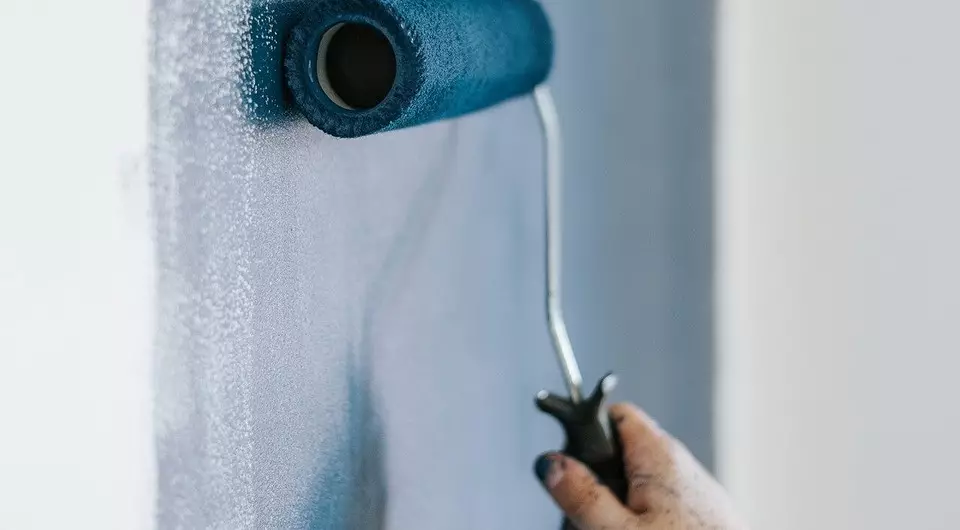
After the mixture can dry, you can stick the cloth. Three primer levels strengthen the blots, allow decorative clips to be securely held in place.
Acrylic means
Forming a waterproof film. It is not as smooth as enamel, but also interferes with the adhesion of materials. To improve adhesion, the painted acrylic composition is processed.How to prepare the surface
- Mix the primer and solvent in proportion 1: 1. As in the case of a water-emulsion, the solvent will help the primer to penetrate the most deeply. We wait until the mixture is dry.
- We put the primer of deep penetration. Again sushim.
After that, you can proceed to further finish. But some masters recommend to apply another preparatory layer of liquid wallpaper glue, on which finishing panels will be fixed.
We figured out how to glue wallpaper on paint so that they keep well. It is easy to do this if you correctly determine the type of finishing composition and its condition. It is impossible to mount the creation on the shrinking coating. It will last long. The continuing old decor will have to be removed, the foundation is cleaned, it is possible to sharpen, primitive. Now she is ready for further repair.




